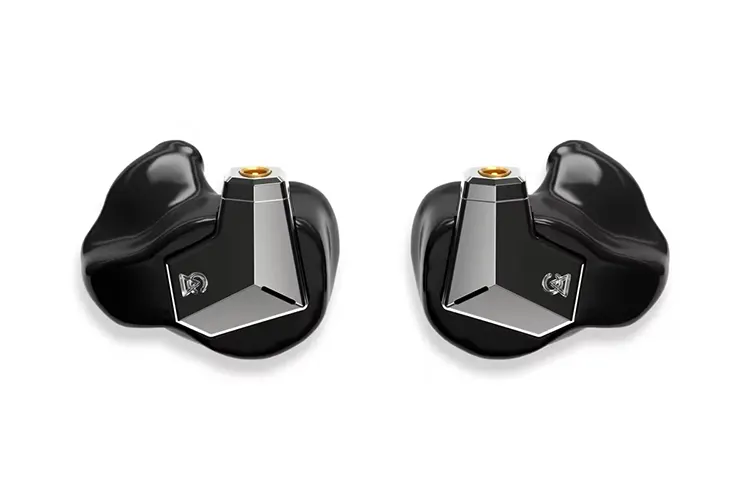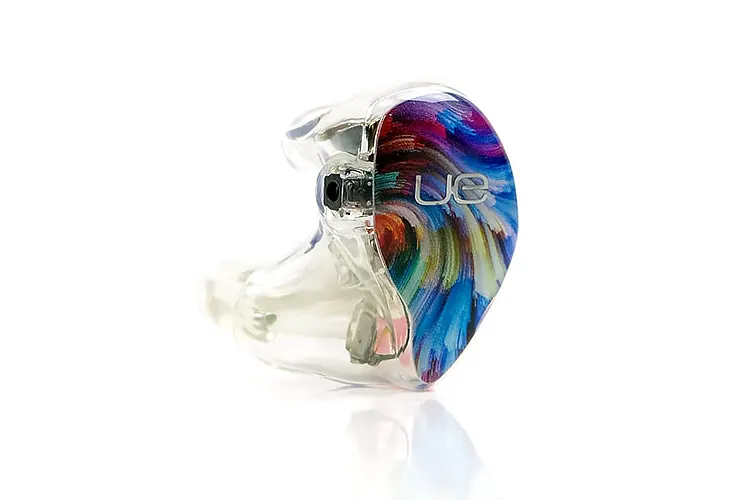Synergy
Efficiency
The IEM Twin Pulse is rated at 16Ω impedance with an SPL of 114dB @ 1kHz 1mW.
It was easy to drive though, regardless of the device used. I did have to raise the volume higher on the Cayin to get a perceived evenness of volume compared to the Shanling. This could be where the 4.4mm balanced cable made the difference.
Using high gain on both sources, I was able to drive the Twin Pulse without issue, and the Isophonic tuning definitely helped. A black background was presented on both cables as well, regardless of volume.
DAP Pairings
I tested three DAPs during the review period, the Shanling M6 Pro, Cayin N6ii (E01 motherboard), and the Astell & Kern AK120 Titan. All three meet my needs in a portable DAP and provide excellent sound; while coming from different directions even if they aren’t new.
Shanling M6 Pro
For those who prefer a warm, richer signature, the M6 Pro should fit the bill; even though there are newer DAPs out. Running the Dual DAC and with gain on Turbo provides plenty of power, even for those demanding sets.
The M6 Pro could easily drive the Twin Pulse, and my preferred choice was the 4.4mm balanced cable. Timbre comes across as rich, with a warmth of sound, the Cayin cannot match. The Twin Pulse did lose detail, but the sumptuous smoothness of the signature complimented both the source and IEM.
Cayin N6ii
Cayin DAPs are known for outstanding detail and the N6ii is no different. Running the E01 motherboard, the organic more neutral sound presented plenty of detail, which the Shanling could not match.
Even running the 3.5mm SE cable, the Cayin was my preferred listening option of the two. Bass reached deeper and tighter, while the mids opened up allowing the complexity of many songs to show with more authority.
Astell & Kern AK120 Titan
The Astell & Kern AK120 Titan is a new acquisition to me, along with a couple of headphones. In talking to another reviewer, he mentioned how the AK100 & AK120 helped reset the perception of what a consumer might “need” to enjoy their music.
One of my favorite all-time devices is the A&K CA1000T, and the family resemblance is quite easy to see. Detail on par with what you would expect an at-the-time purchase of $1299 would offer, the 120 has stayed the course of time.
When paired with the Twin Pulse the two complimented each other’s strengths well. The level of detail coming out was as good as the Cayin, in fact, clarity was better.
The IEM Twin pulse showed that it could pair with a multitude of devices easily as a result.

Select Comparisons
The following comparisons to the IEM Twin Pulse were completed using a mixture of the Shanling M6 Pro, the Cayin N6ii (E01), and the Astell & Kern AK120 Titan. All IEMs were fitted with balanced cables and foam tips except for the Supermoon and UE Live, which are custom IEMs and do not require tips.
Campfire Audio Supermoon
The CFA Supermoon is a custom IEM, which has a 14mm full-range planar magnetic driver with a 2-micron thick diaphragm. This is a departure for the company, getting away from their typical build which contains Balanced Armatures and dynamic drivers.
Coming in at a 50% price increase over the Twin Pulse, this is still a valid comparison due to the proximity both have in their respective line-ups.
Technical
Able to reproduce a 5Hz–20 kHz Frequency Response, with an SPL of 94dB @ 54.0 mVrms; and a resistance of 15.5 Ohms @ 1kHz Impedance, the Supermoon comes across as a bit harder to drive than the Twin Pulse to drive. It is. Truth be told though, all in this comparison are fairly easy to drive.
Design
Since the Supermoon is custom, it is significantly larger than the Twin Pulse, with a more typical shape of shell, faceplate, and nozzle.
Fit is exceptional since I had our local audiologist do a wax fitting. She did a fantastic job. Not a fair comparison, but this does show how the shape of the Twin Pulse is significantly different than most IEMs.
Both are fabulous in look and design. The silver of the Supermoon faceplate gives an excellent accent to the shiny black shell, while the gear, wheeled design of the Twin Pulse faceplate looks upscale and luxurious. The edge in cable goes to the Supermoon since the Twin Pulse has that finicky ear hook inner bendable rod.
The 4.4mm balanced cable of choice for the Supermoon is ddHiFi’s BC130B of 4-strand OCC copper matches nicely with the Supermoon compared to the stock balanced cable of the Twin Pulse, which also makes an excellent match.
Performance
Both IEMs provide a pleasant signature, but there is more vibrancy to the Supermoon, making for a somewhat more “exciting” signature. The smooth character of the Twin Pulse is replaced with more energy, which is a bit artificial in the Supermoon.
The Supermoon has more of a push into the definition and air region, with better top extension than the Twin Pulse. I find that on some songs, the upper end in the Supermoon could get spikey, and the after-market cable tamed this nicely.
Due to that extension up top, micro details come across as more accurate, but a thinning of notes ensues (which is typical CFA), making for a less organic signature.
The soundstage is also not as high on the Supermoon but extends a small amount wider. Depth is not as good either, which gives the 3D edge to the Twin Pulse in stage dimensions.
Even with that larger stage, the weight of notes comes across thicker on the Twin Pulse, but still realistic. That smooth character comes across again, lending an organic touch to the overall presentation.
The imaging feel of the Supermoon presents closer to the front, due to the crunch of percussion notes, making the mids seem more frontal in attack.
The Twin Pulse is more laidback in comparison, but without losing definition or clarity. I would not say diametrically opposed to each other, but more of a good companions to each other.
Ultimate Ears UE Live (Custom)
The UE Live is an 8-driver five-way crossover reference level monitor. When the Live entered the market, it was widely regarded as one of the best IEMs for an accurate, detailed signature. Many are used on stage by artists as a result.
Technical
UE Live employs six balanced armature drivers combined with a 6mm neodymium dynamic driver and one of UE’s proprietary ‘True Tone’ drivers.
These eight drivers are arrayed so one BA driver serves for the high frequencies, four drivers handle the midrange, and three drivers cover the low frequencies.
With a frequency response of 5 Hz to 22 kHz, an impedance of 10 ohms @ 1kHz, and a sensitivity (SPL) of 105 dB @ 1kHz/ 1 mW, the Live is extremely easy to drive, and I had to lower the volume by two notches for the perceived same volume level over the Twin Pulse.
Design
A custom compared to a universal regarding fit isn’t really a fair comparison. But the design certainly is fair game. While the Twin Pulse looks like an exquisite Steampunk industrial design, the Live (unless you customize it) looks bland and efficient in comparison.
Fit is on par with the Supermoon once the music starts. UE uses a laser-based fit system to determine the best possible shape for the custom shell.
While the fit is very, very good, the Supermoon to me provides a somewhat more accurate fit and better isolation. The UE Live was chosen with an audiophile fit, so the nozzle is not as long, which may have some effect on isolation. With the proper tip, the Twin Pulse gives the user an excellent fit and isolation is top-notch.
Much like another well-known audio brand, UE’s choice of cable is very basic. It is pretty much understood that an aftermarket cable will be purchased. But the stock cable while thin is still a very good cable.
Performance
Using that stock cable on the Live, I find the sound to be too analytical for my tastes. I appreciate the exceptional level of detail but prefer a warmer signature. After adding the Null Audio Symphonym Tiburon MKIII in UPOCC 8-strand copper with a balanced connection, the sound fell more into my preferred listening signature.
If this comparison were based solely on clarity of detail, the Live would win hands down. But there is so much more involved that the Twin Pulse carries itself well when looking at the whole.
The Live is indeed one of the best at giving proper weight to the notes, with exceptional accuracy and detail. Combined with a 3D stage, giving excellent space for all instruments and vocals it is indeed one of the best out there.
However, there is a somewhat artificial “flattening” in the 7-9kHz region, which hinders clarity. I hear this on piano solos especially, and it carries over into the sharp region. This gives an odd flattening to what should be one of the best instruments regarding depth and thickness of note.
I believe this was done to preserve details, but there is an analytical touch as a result. This does not hinder the overall character, but compared to the smooth nature with which the Twin Pulse plays pianos, makes me reach for the Twin Pulse for jazz music as a result.
Where the Live attacks the song, the Twin Pulse allows the song to come your way on a bed of smoothness, that still can hold its own with enough detail.
Our Verdict
Having never listened to any of the Spirit Torino headphones, I anticipated I would be surprised by the IEM Twin Pulse Beryllium. And in a very good way. Its smooth character won me over for its well, smoothness; but also, the level of detail that also came about.
You can make a reasonable assumption that detail, clarity, and good imaging do not always go along with a character of smoothness in the signature. This defies that logic presenting the listener with a rich, somewhat warm signature as well as some excellent definition to go along with it.
My only quibble is the bendable wire inside the ear hook area. I would have preferred a pre-bent, soft segment, which to me would be more workable. A minor flaw in an otherwise excellent package.
Changing the filter and tips can make for a nice flexible system to better tailor the sound of this IEM to your own preference. Overall, this makes for a very versatile package.
Spirit Torino IEM Twin Pulse Beryllium Specifications
- Technology: Twin Pulse isobaric System
- Driver: 2x 10mm dynamic micro drives beryllium Spirit
- Cable length: 1.2m Litz 392 cores OCC silver-plated + 8cores silver
- Maximum power handling: 2 mW
- Impedance: 16 ohms
- Headphone type: In-ear monitor
- Frequency response: 14-33.000 Hz calibrated on Isophonic curves
- Weight: (without cable) 6 g
- Efficiency: 114 dB@1k HZ, 1mW




